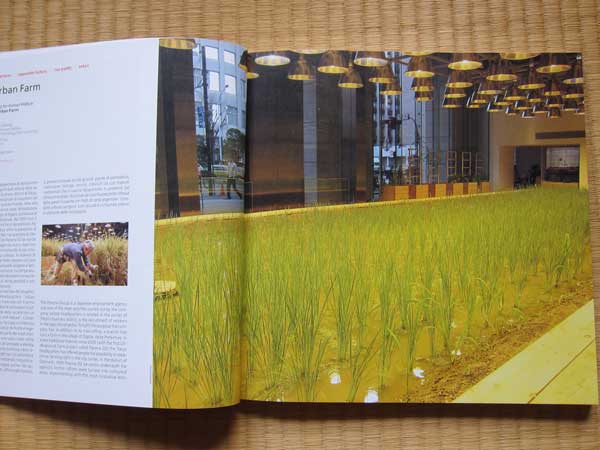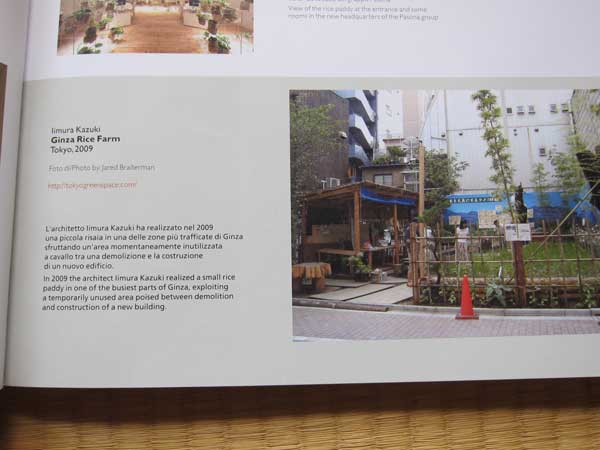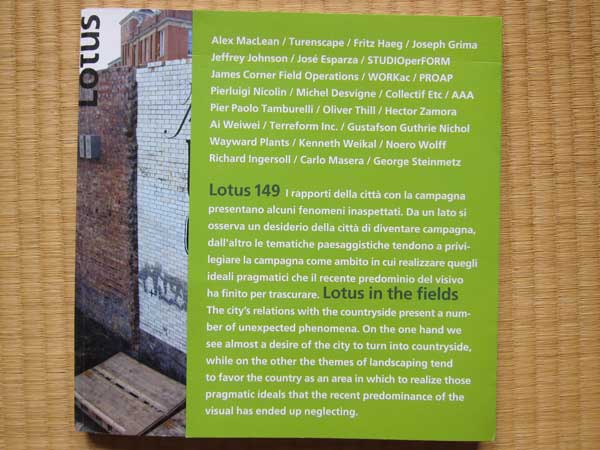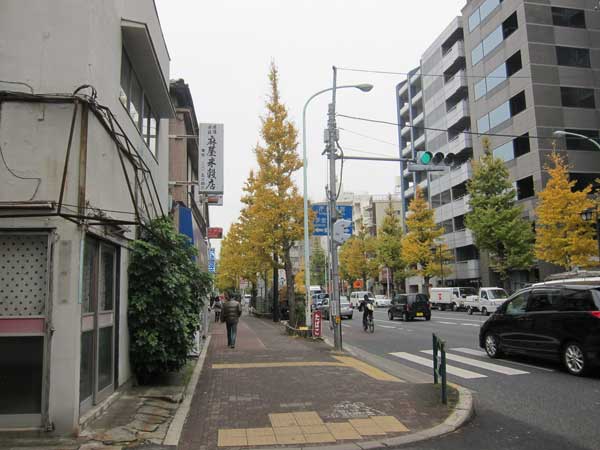
「Lotus』というイタリアの雑誌に私の東京の農園の写真が二つでました。パソナのロビーの田んぼと銀座農園の空き地の田んぼの写真が選ばれました。「Lotus』には素敵な建築のプロジェクットがたくさんのっています。四角いかたちです。もっと東京のグリーンスペースを雑誌に紹介したいです。
Lotus Editorial kindly sent me a copy of Lotus 149, titled Lotus in the Field, which explores the relations with the countryside. Lotus is a beautifully designed, Italian-English bilingual architecture quarterly from Milan.
Lotus 149 includes two of my urban agriculture photographs: one of Pasona’s corporate lobby rice field, the other an outdoor, temporary rice field in Ginza that took advantage of an empty lot between demolition and new construction.
I was happy to see that my Pasona photograph extends into a second page, and I like how the image shows a more ambivalent side of the project than the text and photos provided by the architects and corporation. Especially with the post-3.11 energy shortages after the nuke plants have been suspended, creating a show garden with grow lights looks less than utopian.

You can see the original 2009 and 2010 posts on Tokyo Green Space that inspired Lotus 149: about Pasona, and about Ginza Farm.



